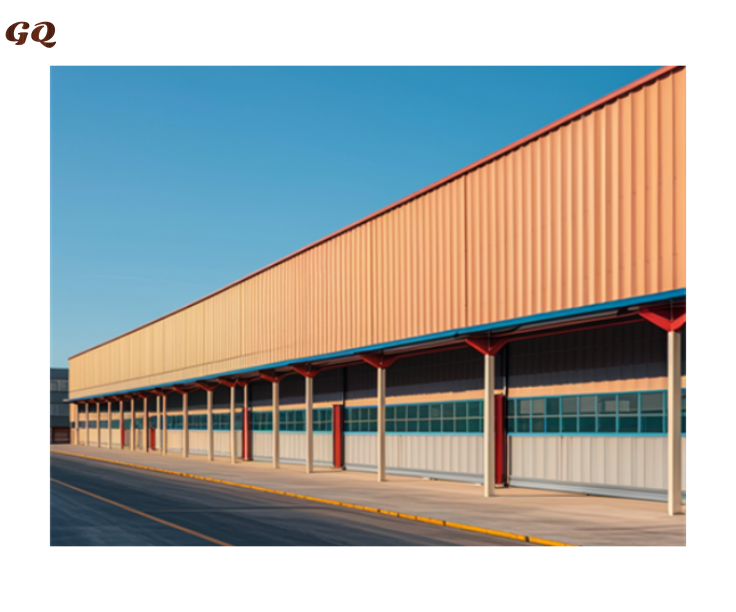Introduction
Prefab houses, also known as prefabricated houses, have become a more and more common choice on the real estate market because of the speed with which they can be constructed--a feature that isn't bad at all in its favor --they are cheaper to built and offer greater individuality than traditionally built homes. Nevertheless, one of the major worries of potential homeowners is whether these prefabricated houses built many miles away from their final site can match long life and maximum durability that traditionally constructed dwellings enjoy. This article examines from various perspectives how prefabricated houses are made, how theses affect their physical characteristics and what choices should still be there to take account of durability and life-span concerns.
Materials Used in Prefab Construction
Prefab homes can be constructed using a variety of materials, including wood, steel, and concrete. Each material has its own merits in terms of longevity:
Wood: A resource that can be derivative, wood is widely used in prefabricated houses because it has much more insulation but no thermal bridging. Properly treated and maintained wood can be almost as long-lasting as ever and resistant to attack from its enemies: water damage, rot and termites to name but three.
Steel: Strong and able to withstand even severe weather conditions, steel is a good choice for prefabricated houses, particularly in areas in the coastal district where typhoons abuse Japan every year.
Concrete: Beautiful and extremely long-lasting, concrete also has excellent resistance to fire and non-attack by insects. This makes it a suitable material if you hope your home will stand out after several decades of wear and tear.
The quality of materials used is crucial in ensuring the construction quality and longevity of prefab houses. High-quality materials, provided they are properly maintained, can make a prefab house able to stand the test of time.
Techniques of Construction and Quality Control
Prefab houses are manufactured in a controlled environment which ensures quality control as compared to traditional building sites. This controlled setting guarantees each component is finished to the appropriate specifications, reducing chances of making mistakes and inconsistencies that would effect durabilities.
Quality control steps, including regular inspections and wide tests of materials and components, help guarantee that prefab homes rise to or surpass industry standards for construction quality. They are essential for maintaining the structural integrity and life span of a house.
Design & Engineering of Systems
The design of a prefab house is just as important as the material it is made of. In designing a prefab home, engineers and architects must take into account such factors as the local climatic features, soil type (or types), and probability of natural disasters. These considerations are important for allowing the house to be structurally sound and withstand the environmental pressure it will encounter over time.
A well-designed prefab home may incorporate features which enhance its durablity, such as advanced insulation, moisture barriers and sturdy support systems. These design aspects not only refer to the home's lifespan but also improve its energy efficiency and tough resistance.
Climate and Environment
Prefab homes can be designed according to the particular characteristics of different climates and environmental conditions. Prefab. homes can have any number of characteristics to suit the climate they are located in, from heat-resistant materials for desert climates to wind-resistant designs in coastal areas.
A Prefab house's ability to withstand the rigours of weather and natural disasters is just another proof of its durabilty. High-quality materials, combined with responsible planning and technology, mean prefab homes can be as robustly constructed as traditionally built ones—if not more so.
Maintenance and Upkeep
Just like any house, prefabricated houses require regular maintenance tasks in order to keep them looking good. This includes jobs like painting, sealing, cleaning and looking over for damage. Failure to see that these things are done will lead a decline in the home's condition and an early end to its life.
However, prefab homes often come with lower maintenance requirements -- thanks to better construction techniques and materials. Features such as sealed joints and durable exterior finishes can cut down on the need for ongoing repairs and upkeep. Because of these unique features, the home will last longer than would otherwise be possible.
Case Studies and Real-World Performance
Countless case studies have shown that well-built prefab homes can last for decades, sometimes even outperforming traditional homes in terms of durability. These studies usually point out that it's quality materials, design and construction techniques that guarantee the long-term performance of prefab homes.
In the real world too, examples of prefab homes demonstrate that, when they are built to a high standard, these homes can be long-lasting.
Challenges and Solutions
Though prefab homes have many advantages in terms of durability they also have their own set of characteristics that present unique challenges. Problems like damage on the way to site, bad assembly practice or a lack of skilled labour can affect the quality and lifespan of prefab homes.
To address these issues requires the cooperation of reputable manufacturers, following best practice within the industry. This means ensuring that all components are properly protected during transportation, that assembly is carried out by trained professionals and that ongoing maintenance is done when necessary.
The Future of Prefab Construction
The future of prefab construction looks bright, with materials, design and the manufacturing techniques promising yet further increases in the durability and longevity of prefabricated homes. Innovations like 3D-printed components, smart home technologies, and sustainable building materials are set to transform the industry.
As prefab construction continues to develop, it is likely that these homes will become ever more durable and long-lasting. New building technologies make a suitable alternative to those who cannot afford-bedroom homes.
Conclusion
To sum up, prefab houses have every reason to be as durable and long-lasting as traditionally built homes and even more so. By using high-quality materials in order to produce an elaborately finished product that can last for many years, utilizing advanced construction techniques, and following close quality control checks, home builders should be able to provide a solid and sustainable housing solution. As the industry continues to evolve and grow, there is little doubt that the future of prefab construction is very promising indeed - providing home owners with durable, high quality alternatives to traditional building methods.

 EN
EN







































